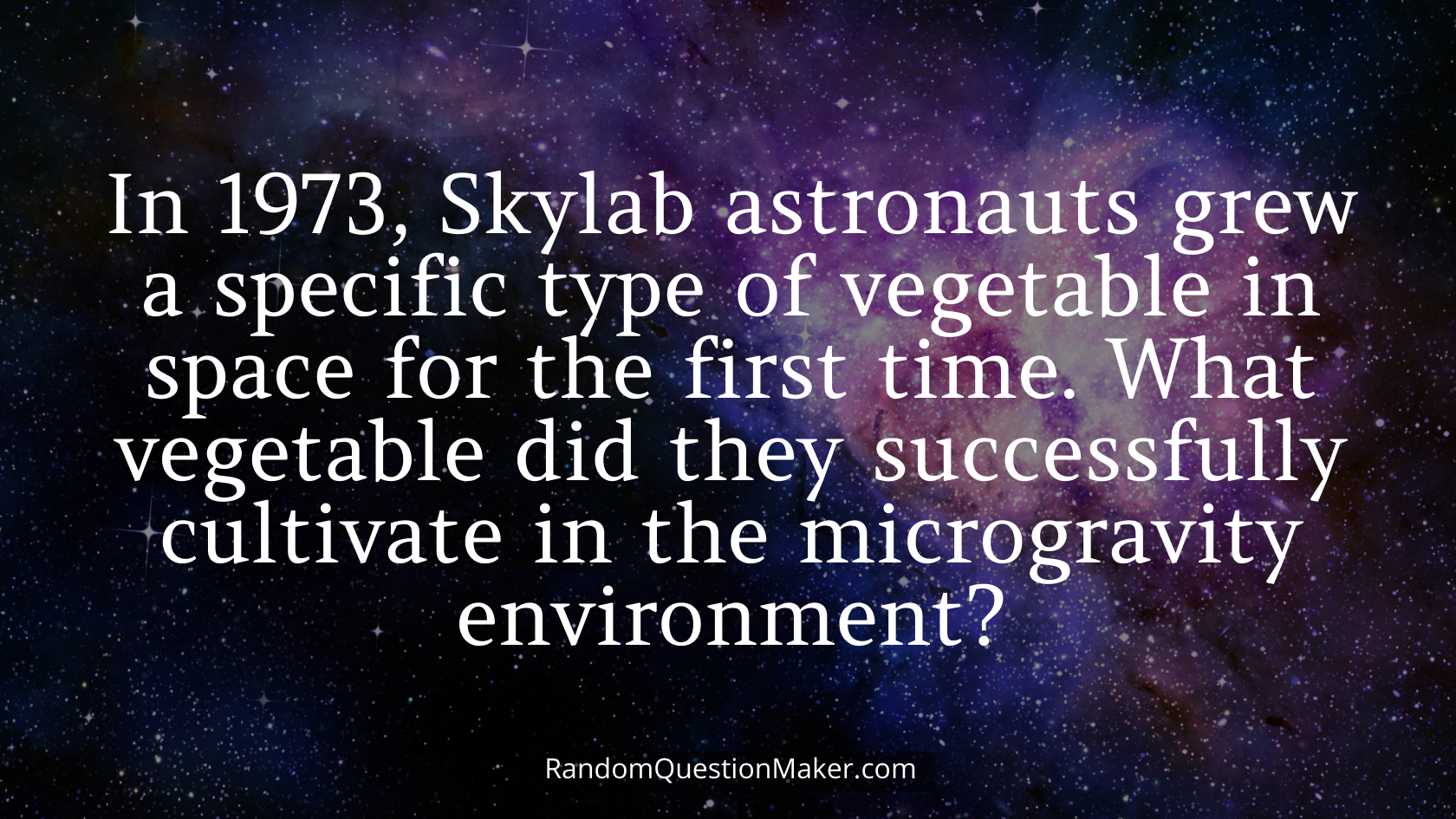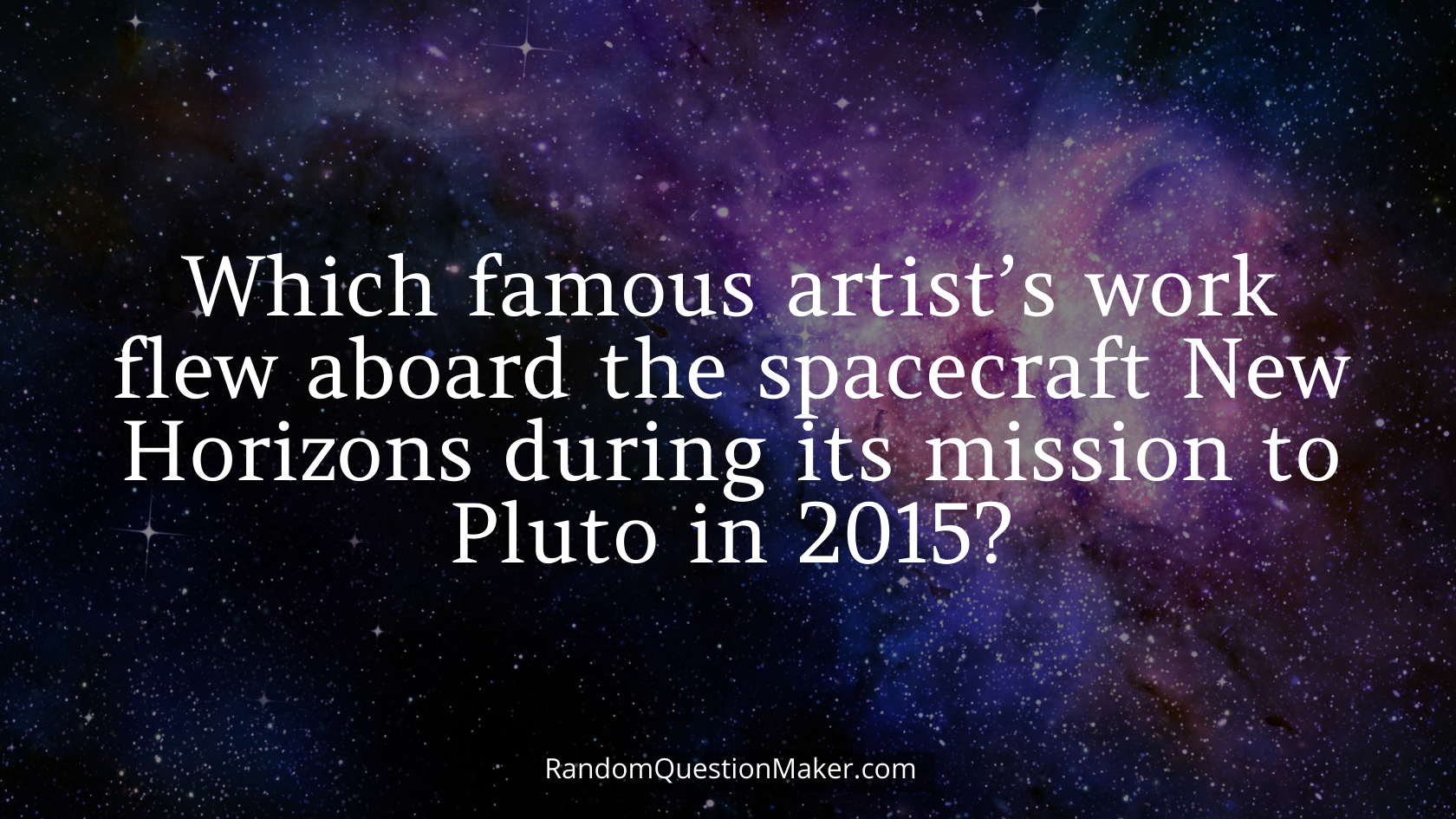Dive into the captivating world of space trivia, where the cosmos unfolds its secrets in each question.
In a brief cosmic exploration, we invite you to uncover intriguing insights about the cosmos, making this journey both educational and enjoyable.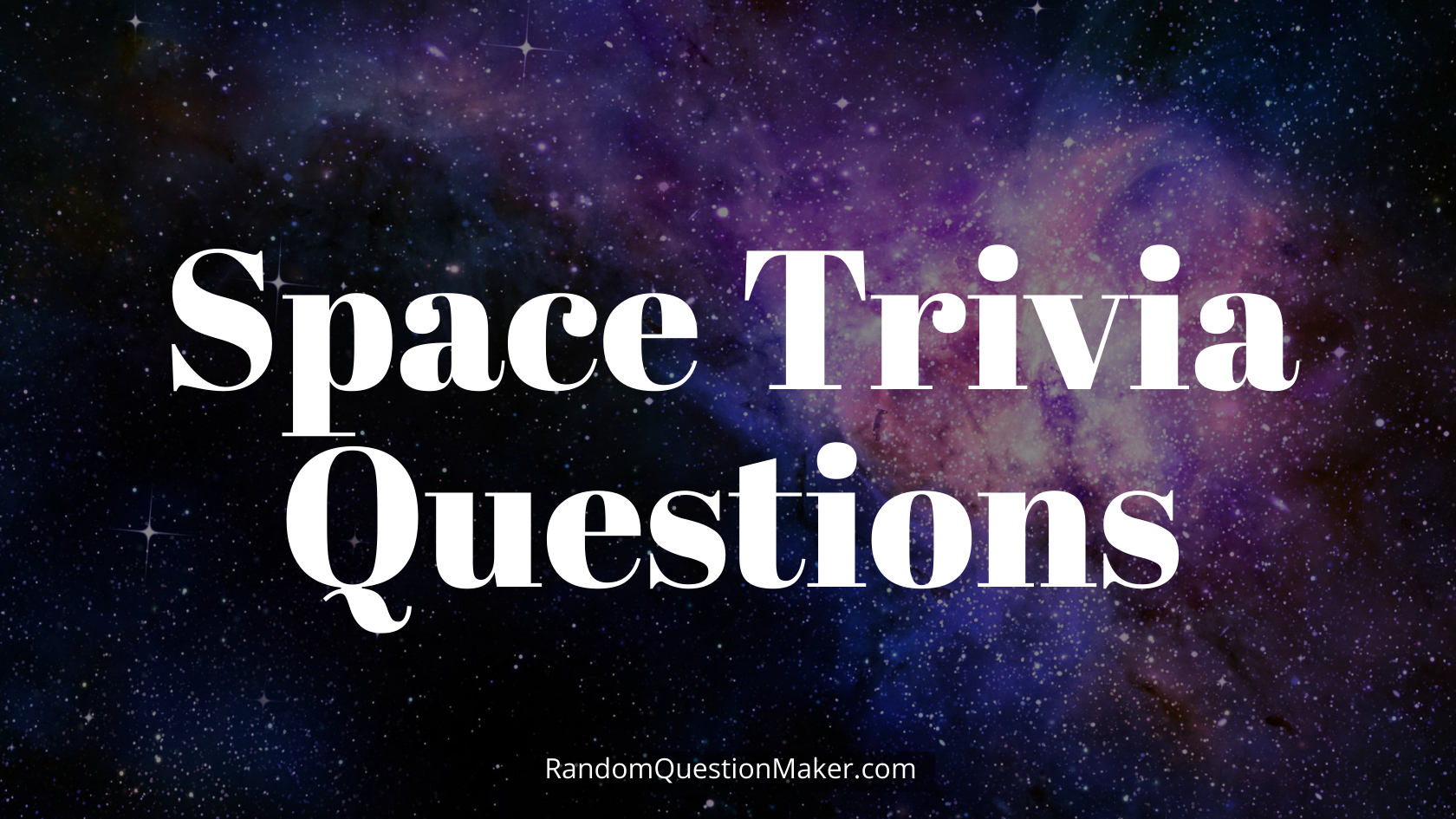
These trivia questions are more than just facts—they’re portals to a deeper understanding of the celestial wonders that surround us.
From distant galaxies to the cosmic phenomena shaping our skies, each question acts as a cosmic key, unlocking a richer perspective on the universe we inhabit.
Join us in this cosmic adventure through space trivia, where discovery meets delight.
Explore the ever-changing nature of space and find joy in expanding your knowledge of the cosmic expanse.
So, let’s embark on this celestial journey together, one question at a time!
Universe Trivia
1. What is the most common element in the universe?
Hydrogen
Hydrogen makes up approximately 75% of the elemental mass of the universe. This light and abundant element are essential building blocks for stars, making it a fundamental component of cosmic structures.
2. Which planet has the highest average surface temperature in our solar system?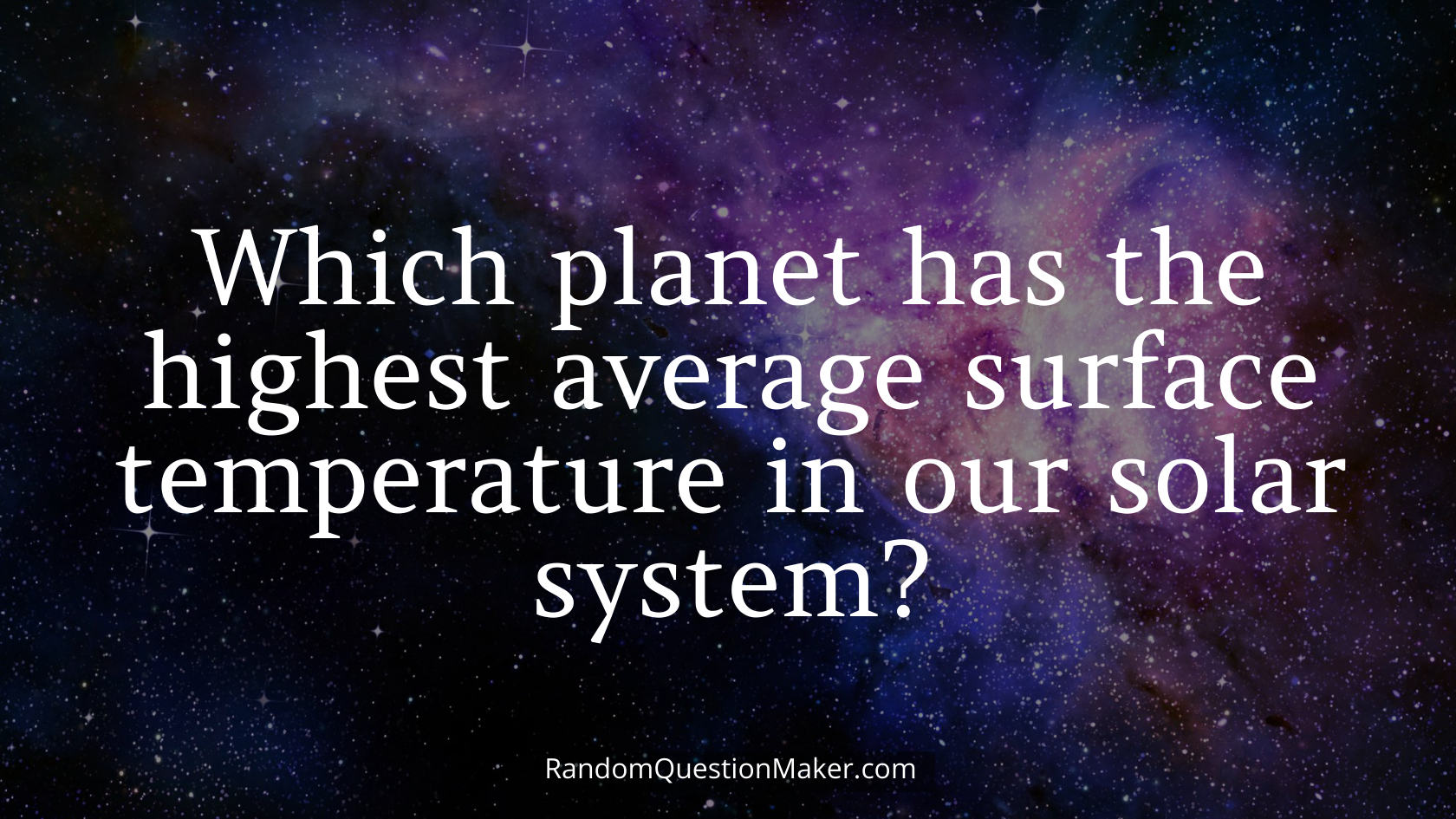
Venus
Despite not being the closest planet to the Sun, Venus has a runaway greenhouse effect that traps heat, making it the hottest planet in our solar system with an average surface temperature of around 462 degrees Celsius (864 degrees Fahrenheit).
3. What is the largest known structure in the universe?
Hercules-Corona Borealis Great Wall
The Hercules-Corona Borealis Great Wall is a colossal cosmic structure, a vast network of galaxies connected by gravity, stretching over 10 billion light-years. It challenges our understanding of the scale and organization of the universe.
4. How many Earths could fit inside the largest star known to us, UY Scuti?
Over 5 billion Earths
UY Scuti is a red supergiant star with a diameter estimated to be more than 1,700 times that of the Sun. Its immense size emphasizes the staggering scale of celestial bodies in the universe.
5. What force counteracts gravity and is responsible for the expansion of the universe?
Dark Energy
Dark energy, a mysterious force, plays a significant role in the accelerating expansion of the universe. It counteracts the attractive force of gravity and contributes to the overall composition of the cosmos.
6. Which galaxy is the closest neighbor to the Milky Way?
Andromeda Galaxy
The Andromeda Galaxy, located about 2.5 million light-years away, is the nearest spiral galaxy to the Milky Way. It is on a collision course with our galaxy and is expected to merge with the Milky Way in about 4 billion years.
7. What is the name of the process by which stars convert hydrogen into helium, releasing energy in the process?
Nuclear Fusion
Nuclear fusion powers stars, where hydrogen atoms fuse to form helium, releasing an immense amount of energy. This process sustains the luminosity and heat of stars throughout the universe.
8. What is the approximate temperature of the cosmic microwave background radiation, a remnant of the Big Bang?
2.7 Kelvin
The cosmic microwave background radiation, a faint glow permeating the universe, has a temperature of approximately 2.7 Kelvin. This remnant from the early universe provides crucial insights into its origin and evolution.
9. What is the primary source of energy for stars during the majority of their life cycle?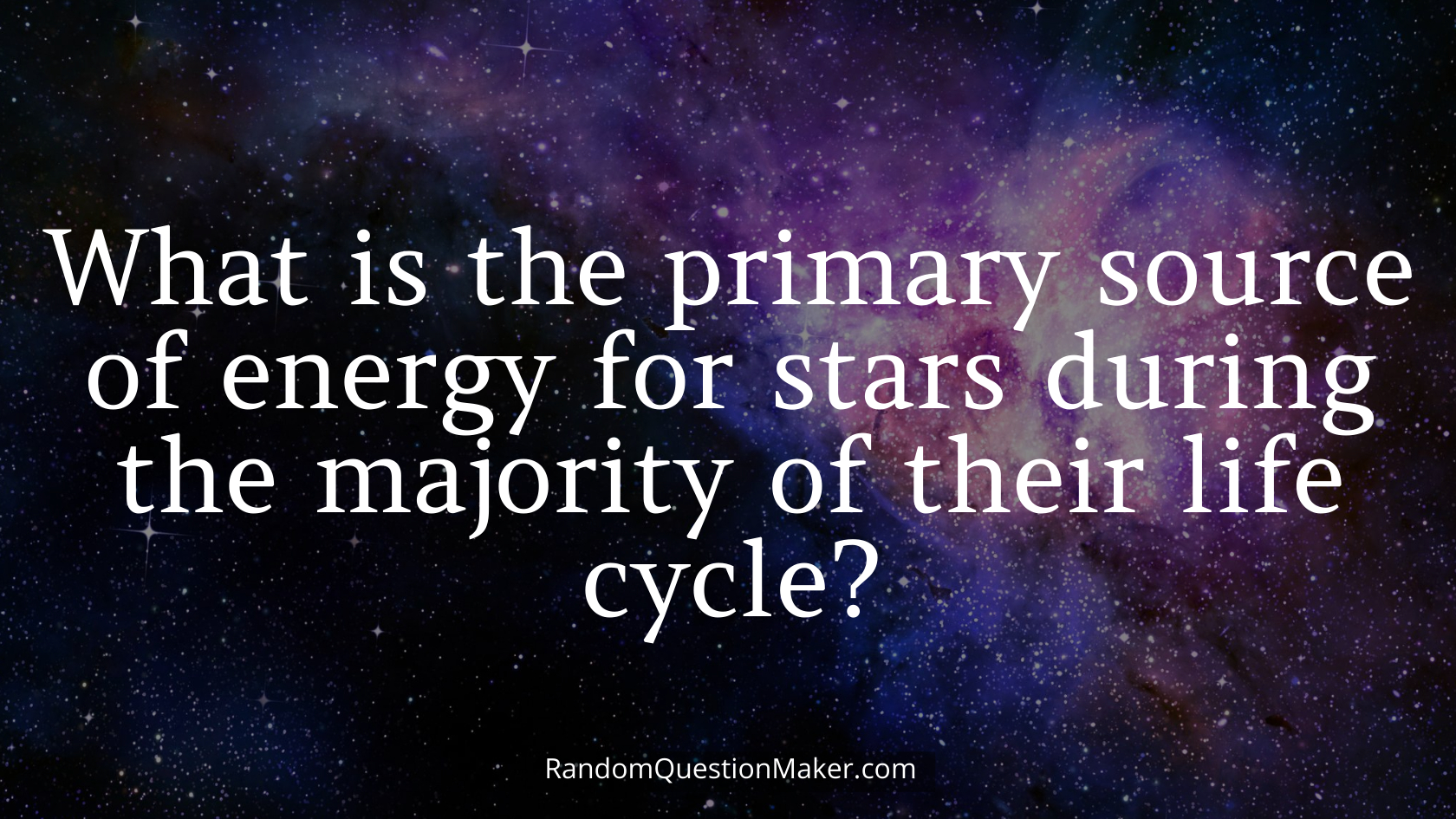
Hydrogen Fusion
Stars predominantly derive their energy from hydrogen fusion, a process occurring in their cores. The conversion of hydrogen into helium releases energy, sustaining the luminosity and stability of stars.
10. What is the term for the boundary around a black hole beyond which nothing can escape its gravitational pull, not even light?
Event Horizon
The event horizon marks the boundary around a black hole where the gravitational pull becomes so intense that escape is impossible. It is a crucial concept in understanding the nature of these enigmatic cosmic phenomena.
Solar System Trivia
11. Which planet in our solar system spins on its side, almost perpendicular to its orbit?
Uranus
Uranus has a unique tilt, rotating on its side at an angle of about 98 degrees relative to its orbit around the Sun. This extreme axial tilt gives Uranus its distinct, rolling motion as it completes its journey around the Sun.
12. What is the name of the largest volcano in our solar system, located on Mars?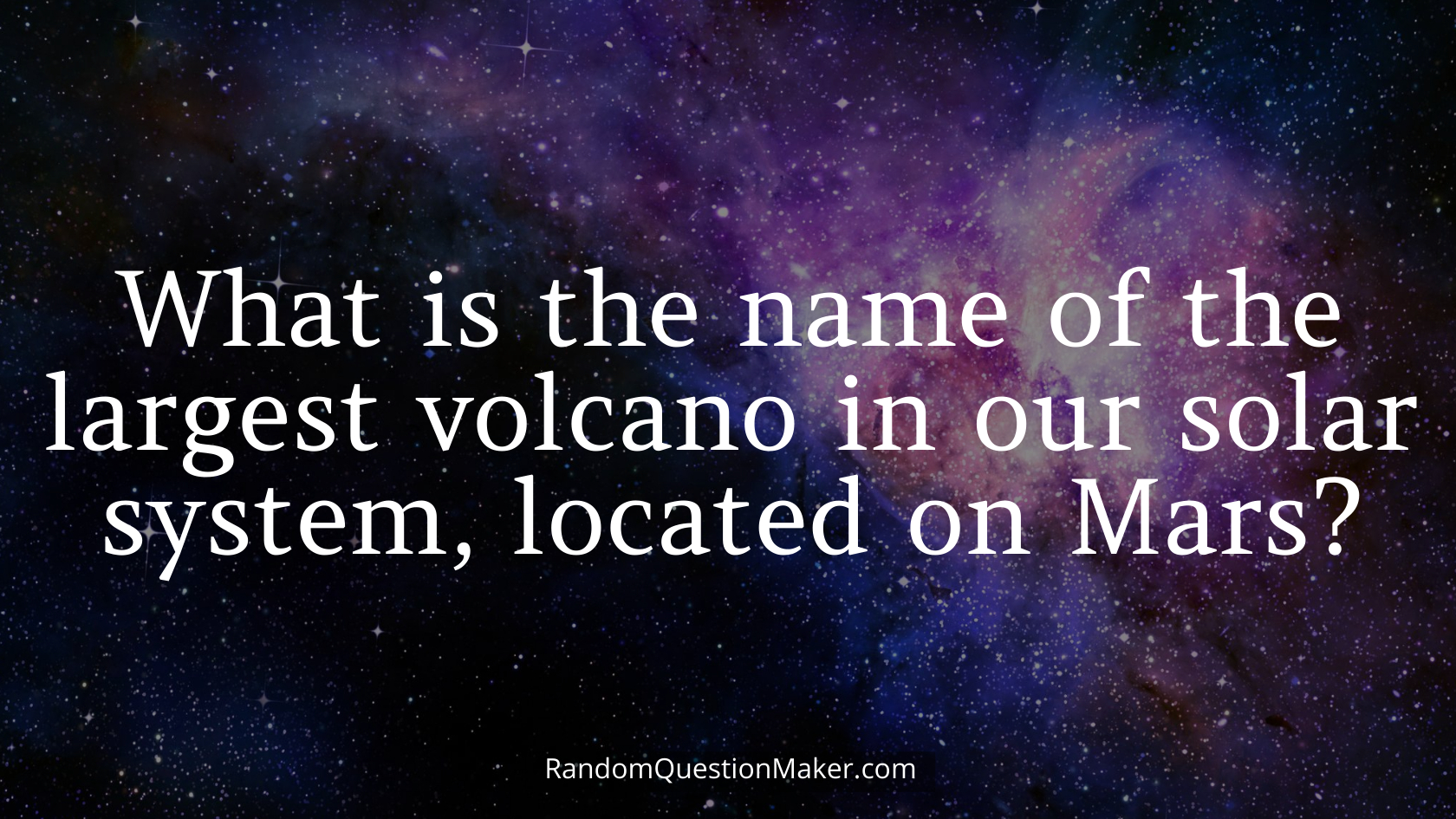
Olympus Mons
Olympus Mons, on Mars, holds the title of the largest volcano in our solar system. This colossal shield volcano stands at a towering height of about 13.6 miles (22 kilometers) and is approximately 370 miles (600 kilometers) in diameter.
13. Which moon in our solar system is known for its dramatic cryovolcanoes that spew icy materials into space?
Enceladus
Enceladus, one of Saturn’s moons, is famous for its cryovolcanoes—volcanoes that erupt icy substances instead of molten rock. These geysers of water vapor and ice particles contribute to the material composing Saturn’s E-ring and intrigue scientists studying this small, dynamic moon.
14. How many Earths could fit inside the largest ring of Saturn, the E-ring?
1 billion Earths
Saturn’s expansive E-ring, composed of icy particles and dust, is so vast that approximately 1 billion Earths could fit within it. This stunning ring, shaped by the gravitational interactions with Saturn’s moon Enceladus, adds to the beauty and complexity of the ringed giant.
15. What is the Great Red Spot on Jupiter?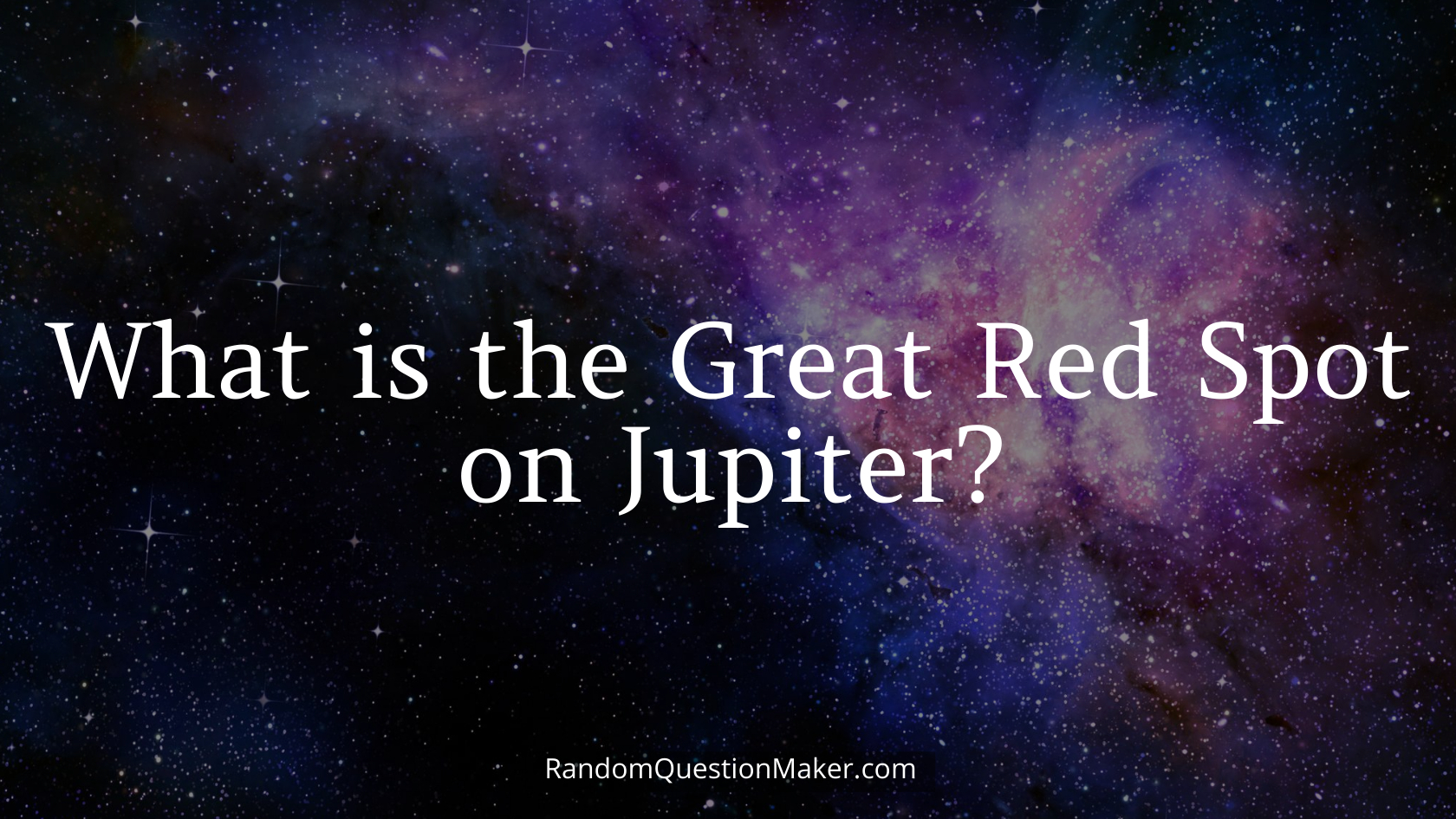
A giant storm
The Great Red Spot on Jupiter is a massive storm, larger than Earth itself, raging for centuries. This enduring atmospheric feature showcases the dynamic and turbulent nature of Jupiter’s atmosphere, capturing the fascination of astronomers and space enthusiasts alike.
Star Trivia
16. What is the phenomenon when a star collapses under its gravity, resulting in a sudden increase in brightness?
Supernova
A supernova is a stellar explosion that occurs when a star reaches the end of its life cycle, experiencing a catastrophic collapse and releasing an enormous amount of energy. During this spectacular event, a single star can momentarily outshine an entire galaxy.
17. What is the smallest type of star in the universe?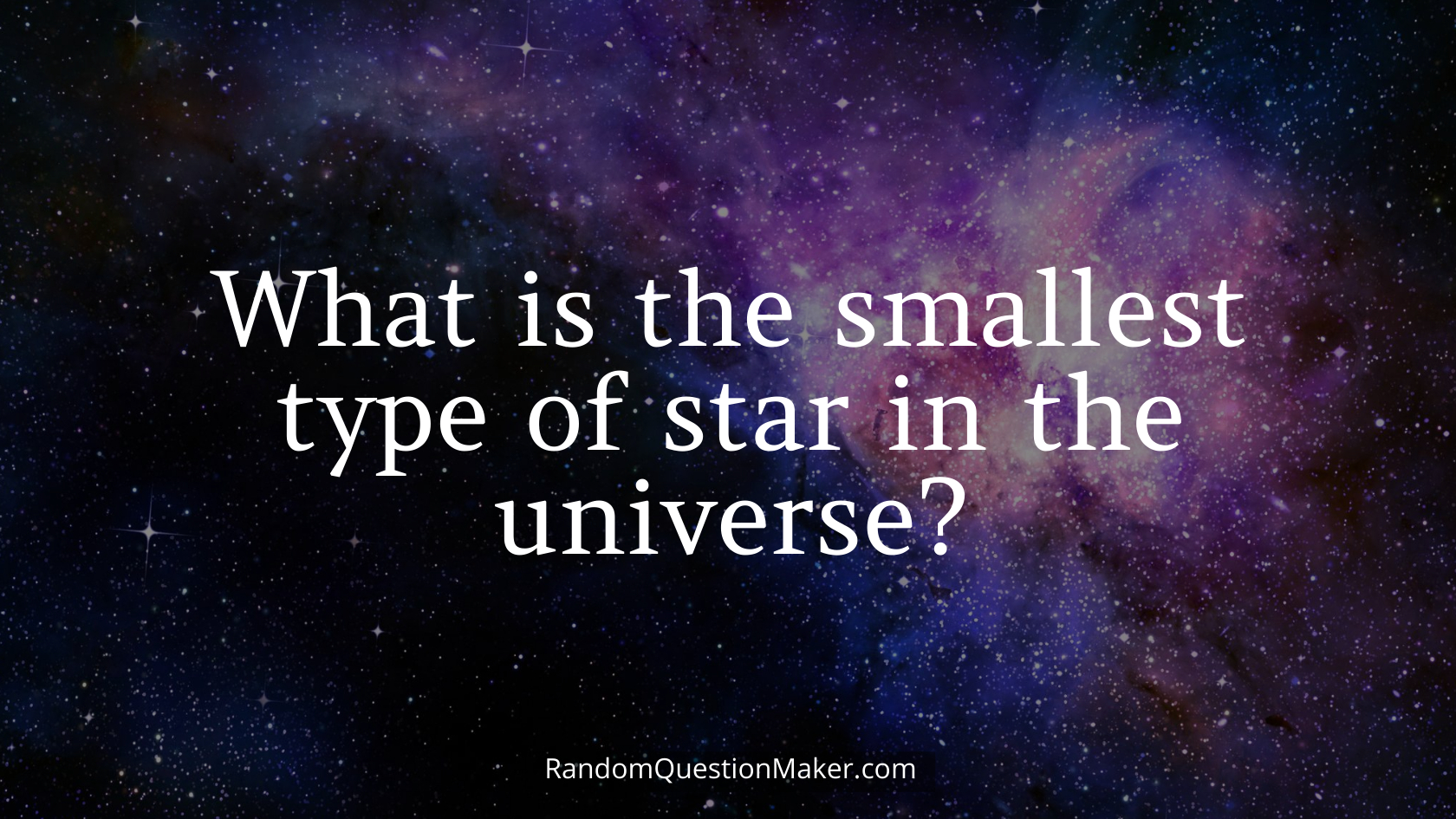
Brown dwarfs
Brown dwarfs are celestial objects that fall between the mass of a large planet and a small star. They lack sufficient mass for sustained nuclear fusion but emit faint radiation, and their discovery has expanded our understanding of the diverse objects inhabiting the cosmos.
18. How do astronomers classify stars based on their brightness as observed from Earth?
Apparent magnitude
Apparent magnitude is a scale used by astronomers to classify the brightness of stars as observed from Earth. The scale is logarithmic, with lower numbers indicating brighter stars, and it helps astronomers navigate the vastness of the night sky.
19. What is the term for a pair of stars orbiting around a common center of mass?
Binary stars
Binary stars are stellar pairs that orbit each other, connected by gravitational forces. This common celestial arrangement highlights the interconnected dance of stars, as they share their cosmic journey in a celestial embrace.
20. What is the primary element that stars convert into energy through nuclear fusion in their cores?
Hydrogen
Stars primarily convert hydrogen into helium through nuclear fusion in their cores. This process releases energy, sustaining the luminosity and heat that define stars as they radiate light and heat into the vastness of space.
21. What is the approximate temperature of the Sun’s surface?
About 5,500 degrees Celsius (9,932 degrees Fahrenheit)
The Sun’s surface, known as the photosphere, has an average temperature of about 5,500 degrees Celsius (9,932 degrees Fahrenheit). This layer is responsible for the Sun’s visible light and the warmth it provides to the solar system.
Space Flight Trivia
22. What was the first human-made object to reach interstellar space?
Voyager 1
Launched by NASA in 1977, Voyager 1 became the first human-made spacecraft to enter interstellar space on August 25, 2012. It continues its journey beyond our solar system, carrying a Golden Record with sounds and images representing Earth’s diversity.
23. Which space agency successfully landed the first rover on Mars?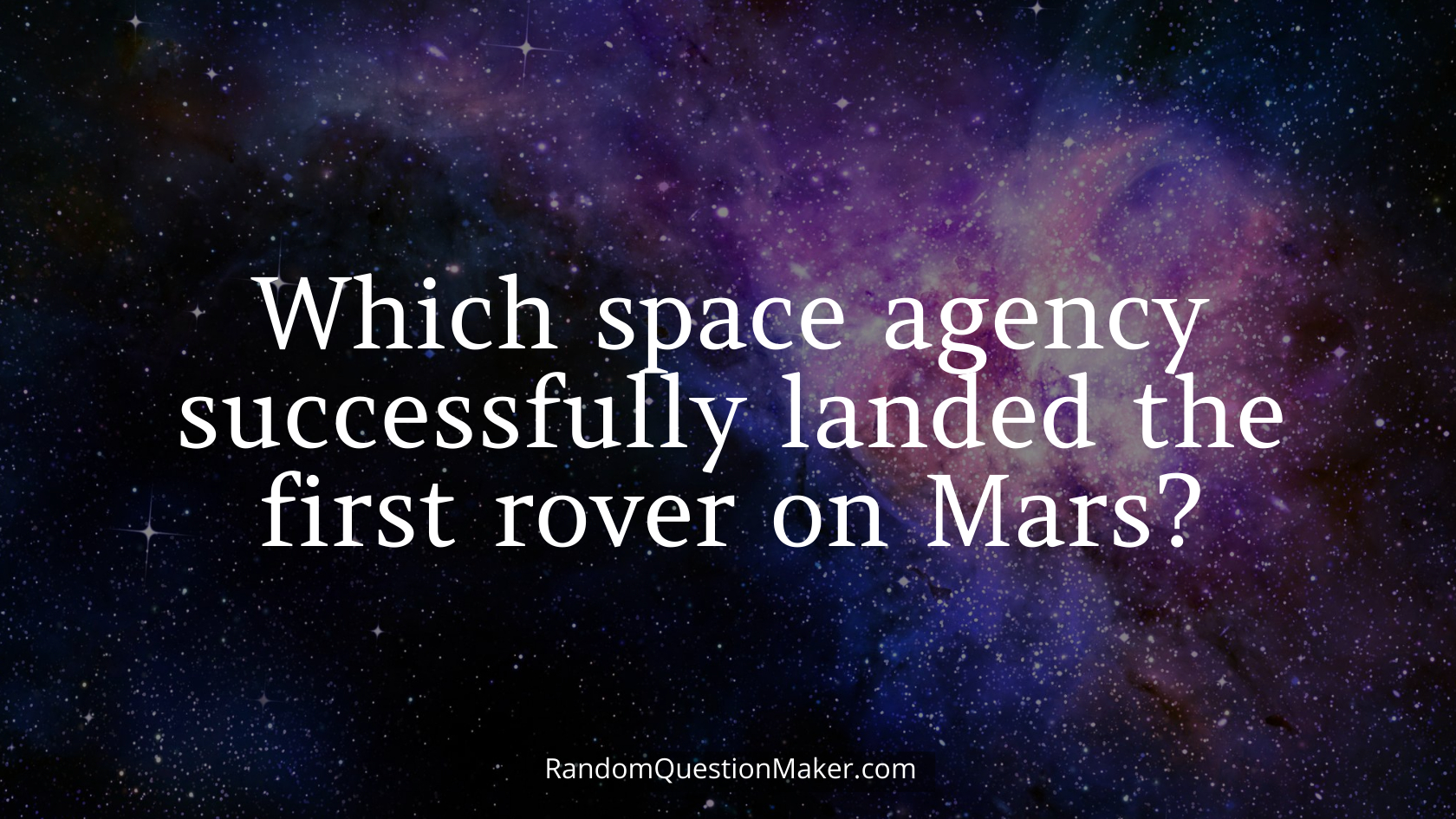
NASA
NASA’s Mars Pathfinder mission, including the Sojourner rover, successfully landed on Mars on July 4, 1997. This marked a significant achievement in space exploration, paving the way for future robotic missions to the Red Planet.
24. What was the first space shuttle orbiter to go into space?
Columbia
Space Shuttle Columbia made history as the first orbiter in NASA’s Space Shuttle program, launching on April 12, 1981. This inaugural flight, known as STS-1, marked the beginning of the shuttle era, revolutionizing human spaceflight.
25. How many people have walked on the Moon?
Twelve
A total of twelve astronauts, part of NASA’s Apollo program, have walked on the Moon’s surface between 1969 and 1972. These historic moonwalkers conducted experiments, collected samples, and left an indelible mark on the landscape of human exploration.
26. What was the first artificial satellite launched into space?
Sputnik 1
Launched by the Soviet Union on October 4, 1957, Sputnik 1 became the first artificial satellite to orbit Earth. Its successful launch marked the beginning of the space age, triggering advancements in space exploration.
27. Which spacecraft holds the record for the longest continuous human presence in space?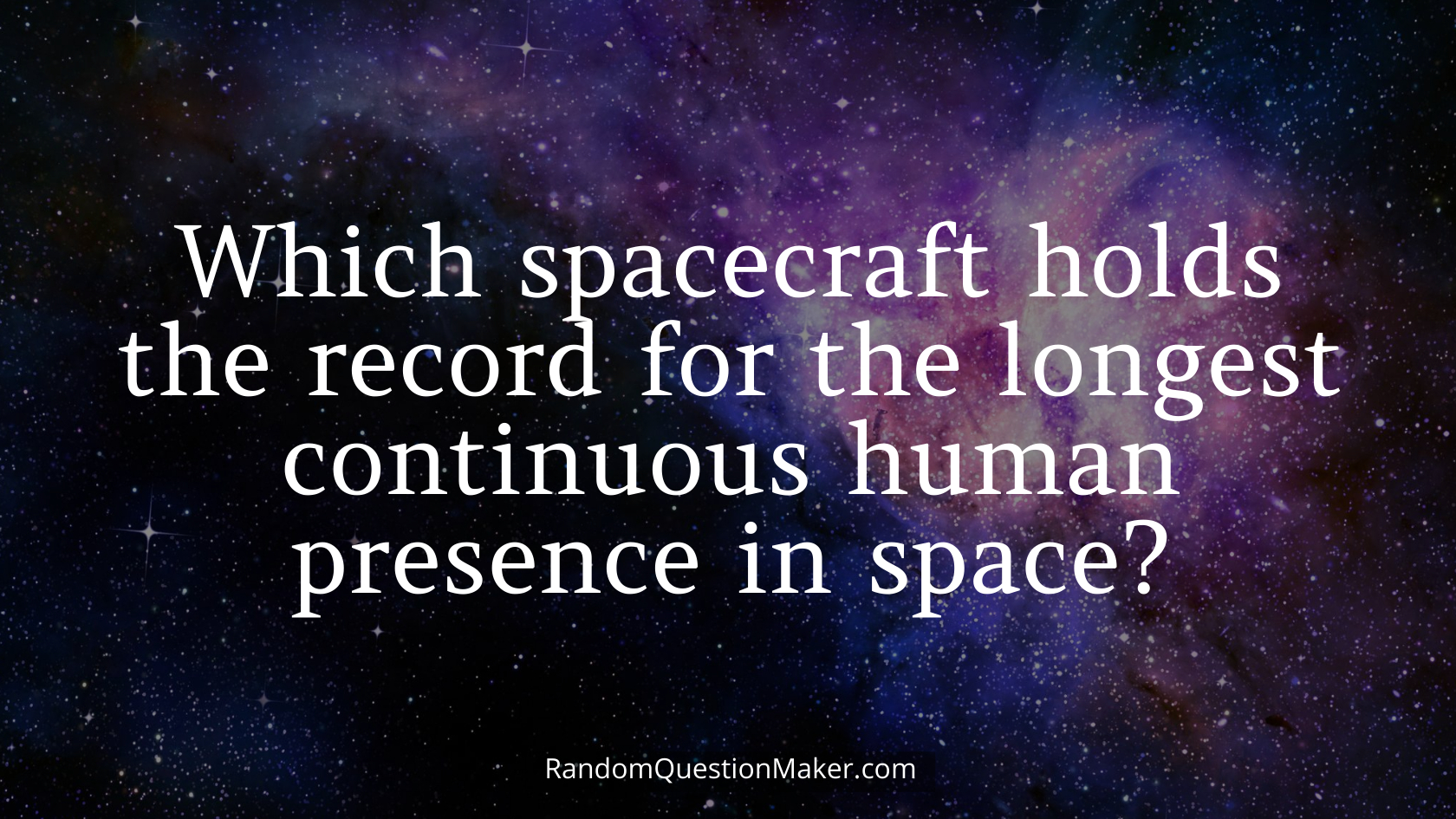
International Space Station (ISS)
The International Space Station, a collaborative effort involving multiple space agencies, serves as a microgravity research laboratory and has hosted continuous human presence since November 2, 2000. It represents a remarkable achievement in long-duration space habitation.
28. What was the first crewed space mission to successfully rendezvous with another spacecraft in orbit?
Gemini 7 and Gemini 6A
In December 1965, the Gemini 7 and Gemini 6A missions achieved the first successful crewed spacecraft rendezvous in orbit. This milestone laid the groundwork for future space rendezvous and docking operations.
29. Which space probe conducted the first flyby of Pluto, providing unprecedented images of the distant dwarf planet?
New Horizons
Launched by NASA in 2006, New Horizons conducted the first flyby of Pluto on July 14, 2015, capturing detailed images and data of this distant celestial body. The mission expanded our understanding of the outer reaches of our solar system.
30. What was the first commercial spacecraft to carry astronauts to the International Space Station?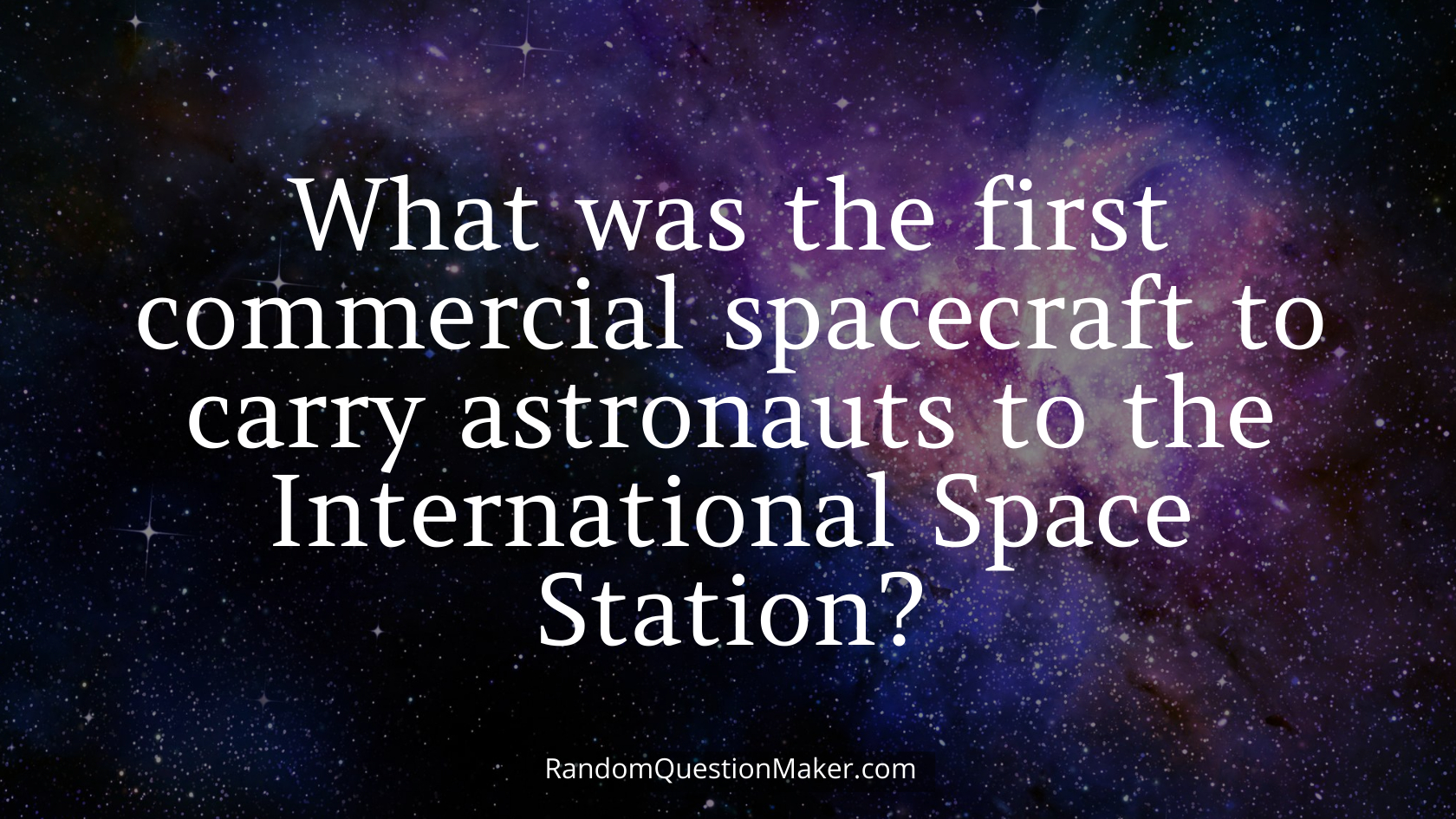
SpaceX Crew Dragon
On May 30, 2020, SpaceX’s Crew Dragon spacecraft became the first commercial spacecraft to transport astronauts to the International Space Station. This marked a significant achievement in the era of commercial spaceflight.
Moon Trivia
31. What phenomenon causes the moon to sometimes appear reddish in color during a total lunar eclipse?
Rayleigh scattering
During a total lunar eclipse, the Earth comes between the sun and the moon, casting a shadow on the lunar surface. The moon can take on a reddish hue due to Rayleigh scattering, where Earth’s atmosphere scatters shorter-wavelength light, allowing longer-wavelength red light to reach the moon.
32. How long does it take for the moon to complete one orbit around Earth?
27.3 days
The moon’s orbital period, also known as its sidereal month, is approximately 27.3 days. This period includes the time it takes for the moon to orbit Earth and synchronize its rotation, resulting in the same side always facing our planet.
33. What is the name of the phenomenon when two full moons occur within the same calendar month?
Blue Moon
A Blue Moon is not actually blue but refers to the occurrence of two full moons in a calendar month. This rare event happens about once every 2.7 years, adding a touch of celestial intrigue to our lunar observations.
34. What is the name of the dark, flat plains on the moon’s surface formed by ancient volcanic activity?
Maria (singular: Mare)
The lunar Maria are vast, dark regions on the moon’s surface created by ancient volcanic eruptions. These plains, visible from Earth, played a role in shaping the folklore and mythology surrounding the moon.
35. How much of the moon’s surface is illuminated by the sun during a Waxing Gibbous phase?
More than 50%
During a Waxing Gibbous phase, the moon is more than half illuminated but not yet a full moon. This phase marks the transition from the first quarter to the full moon, revealing increasing portions of the moon’s illuminated hemisphere.
36. What is the term for the gradual slowing of the moon’s rotation as it tidally locks with Earth?
Tidal locking
Tidal locking is a process where the gravitational interaction between the Earth and the moon causes the moon to rotate on its axis at the same rate it orbits Earth. This results in the same side of the moon always facing Earth.
37. How many times smaller is the moon’s gravitational force compared to Earth’s gravitational force?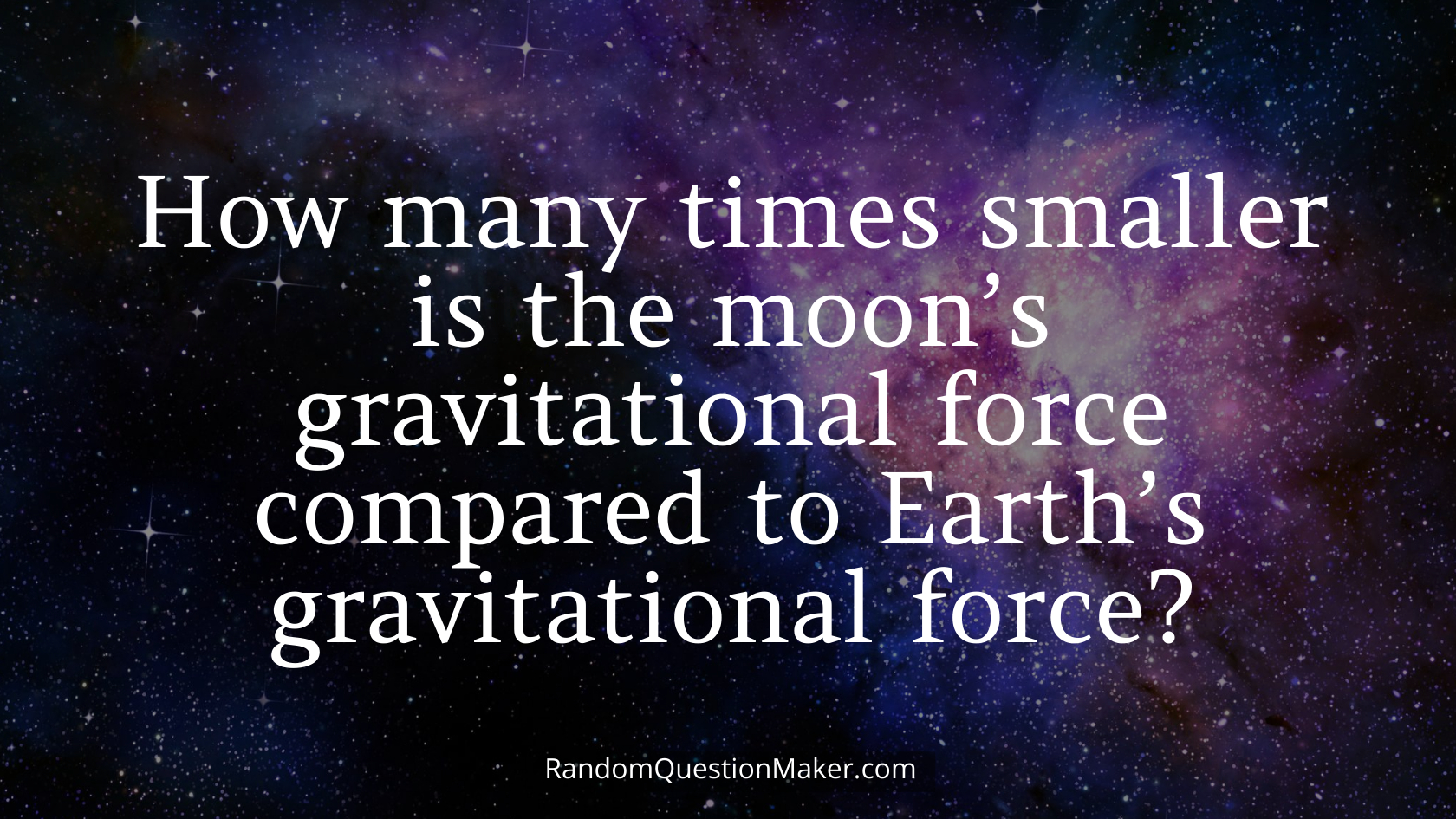
About 1/6th
The moon’s gravitational force is approximately 1/6th that of Earth’s. This difference in gravitational force has significant effects, including the moon’s impact on Earth’s tides and the experience of weight on the lunar surface.
38. What is the name of the large, circular pit on the moon’s surface formed by the impact of a celestial body?
Crater
Craters on the moon are depressions formed by the impact of meteoroids, asteroids, or comets. They come in various sizes, and their presence contributes to the moon’s unique and rugged landscape.
39. What is the term for the darkest part of a shadow cast by an object, such as during a solar eclipse on the moon?
Umbra
The umbra is the central, darkest part of a shadow where light is completely blocked. During a solar eclipse on the moon, the moon’s umbra is responsible for the complete blocking of sunlight, creating a temporary darkening of the lunar surface.
Bonus question
More Trivia Questions
Here is our main Trivia page, for more checkout the below pages:
- Halloween Trivia Questions
- Thanksgiving Trivia Questions
- Christmas Trivia
- 80s Movie Trivia
- Shakespeare Trivia
- Ancient Egypt Trivia Questions
- 90s Movie Trivia
- Disney Movie Trivia

